Study of the Composition/Structure/Properties Correlations in Materials
The Laboratory of for the Study of Composition/Structure/Property Correlations in Materials of the CheMaMSE group is furnished with a wide range of instrumentation and know-how for the study of the physico-chemical properties of materials and the correlations with their composition.
• Surface Studies – The laboratory is equipped with a near ambient pressure X-ray photoelectron spectrometer (NAP-XPS) capable of performing qualitative and quantitative analyses on the surface of materials (ca. 10 nm). This instrumentation allows to determine the chemical state of the surface elements in a non-destructive way. Differently from a classic XPS, the NAP-XPS can inspect liquid and non-conductive samples which are of interest for electrochemical applications, biology, environmental science and many other topics. The laboratory is also equipped with an autosorb IQ capable of measuring materials’ surface area, porosity and chemisorption of various molecules such as H2O, CO, etc.;
• Structural and Coordination Studies – Several techniques are exploited in this laboratory, ranging from mid and far Fourier transform infrared vibrational spectroscopies, to polarized light and microRaman vibrational spectroscopies. With these techniques it is possible to study the structures and coordinations that are established between the different species within a material, the ion-matrix coordination, metal-ligand interactions, or changes in the conformations of molecules and functional groups. Moreover, it is also possible to evaluate the interaction strength between the different functionalities in a sample, or to determine the molar fractions of the components that are present in a hybrid or heterophasic material. The crystallographic structure of the materials is studied using a wide-angle X-ray diffractometry technique, combined with data processing using the Rietveld method;
• Thermal Studies – The laboratory is equipped with several instruments capable to determine the thermal properties of materials, including: (i) high resolution thermogravimetry (HR-TGA), able to study the thermal stability of the samples, both under an inert or oxidant atmosphere; (ii) modulated scanning differential calorimetry (MDSC), to detect thermal events and sample transitions; and (iii) mechanical-dynamic analysis (DMA), to study the thermomechanical characteristics of the samples as a function of the temperature and the applied oscillating load;
• Composition Studies – The laboratory has a full instrumentation for the determination of the chemical composition of materials. In particular, are present two inductively coupled plasma atomic emission spectrometers (ICP), a CHNS-O elemental analyzer, titration systems, and a Karl-Fisher titrator (i.e., to determine traces of water in solvents or materials). In this way the bulk chemical composition of almost any solid or liquid material can be determined and thus can be correlated to the chemico-physical properties obtained from the other studies and to device performance;
• Electrochemical Studies – In this topic, the electrochemical properties of materials are studied by means of different instruments. In particular, the activities focus on: (i) the determination of the electric response of functional materials. For this purpose, several state-of-the-art potentiostats/galvanostats are used, interfaced with the appropriate cells and accessories (e.g., the rotating ring-disc electrodes needed to determine the materials’ reaction mechanism in the process of interest, or electrochemical cells to test the electrolytes); (ii) cyclic voltammetry, chronoamperometry and chronopotentiometry studies; and (iii) studies of reversibility, efficiency, overvoltage and insertion/de-insertion reaction kinetics and deposition/stripping processes occurring during redox reactions of active materials in an electrochemical cell;
• Studies on Materials for Photovoltaic – The activities deal with the study of photovoltaic components and devices by means of a quantum yield measuring system and a two-sun system to accurately simulate the behavior of materials/devices during operating conditions.



